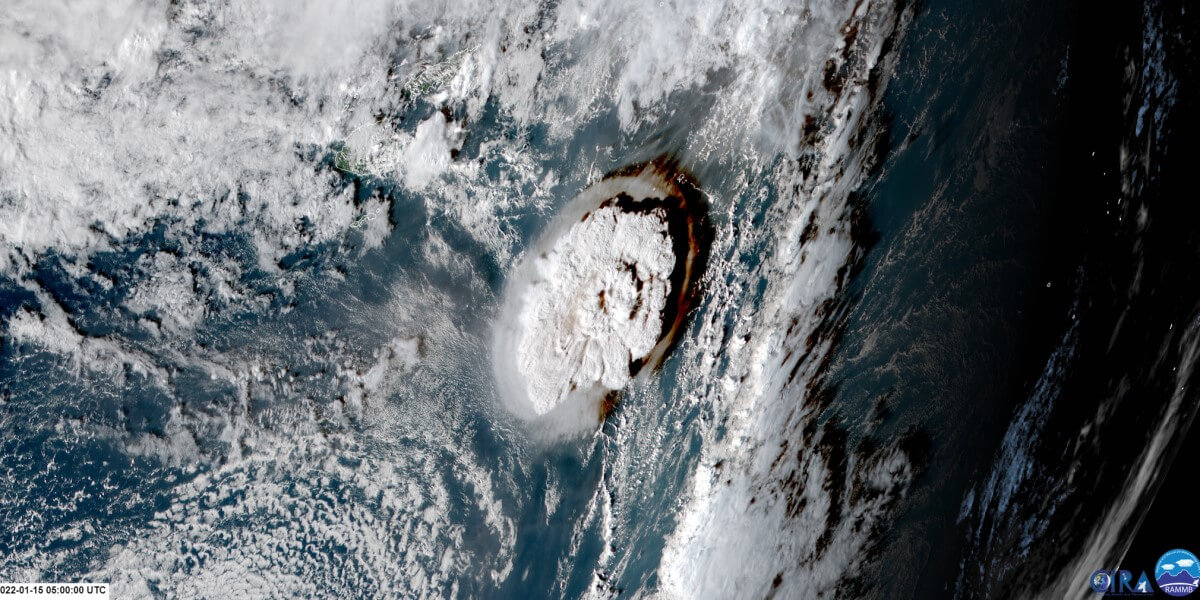Magma is complicated enough. When water enters the scene and mixes with it, things can go haywire.
There are different ways to classify eruption styles. One of these ways is through whether water is involved, or if magma is even part of the action. A magmatic eruption definition is simple enough – magma reaches the surface then comes out of the ground as some sort of product like lava, spatter, ballistic ejecta, ash, or pyroclastic flows.

Janine Krippner
When we don’t have magma at all, but instead an eruption is driven by steam within the volcanic system, we call this a phreatic eruption. An example of this is that awful day at Whakaari in December 2019. A sort of mix between the two is when we have magma interacting directly with water, and this is a phreatomagmatic or hydrovolcanic eruption.
A good example of how phreatomagmatic eruptions can go wild is the enormous 2022 Hunga Tonga–Hunga Ha’apai eruption in Tonga. The magma mixing with seawater once the vent had found itself below the ocean surface added explosive power to this already-large eruption phase. It wasn’t the only reason it was such a big eruption, but it was what I was first discussing with my colleagues as the satellite images were coming through and we were trying to grasp the scale of the ash plume. We know that water can make eruptions much more dangerous. Even a lava flow mixing with water can cause an explosion.
During a phreatomagmatic eruption the water source can be the ocean, a lake (like Te Wai ā-moe /Crater Lake at Ruapehu), glacial meltwater, or groundwater that we can’t see at the surface. Magma mixing with water has made many of the 53 known eruptions within the Auckland Volcanic Field more explosive. This makes a problem eruption much more of a dangerous situation. Instead of producing lava flows and forming a new scoria cone, we can get deadly steam-rich pyroclastic flows called “base surge” racing across land or water. This is a complex process, how effectively the magma mixes with the water is important. Eruptions can also progress from phreatomagmatic to magmatic once the water is removed, or the magma is no longer able to contact the water source.
Phreatic eruptions might sound much milder, and comparing them to magmatic eruptions this is true, but there is one major problem here. When an eruption is driven by steam, we don’t get the same signals as we do when magma is moving towards the surface. This can mean very little or no warning, or warning signals we can only see in hindsight when we look much closer at the data. They can surprise us. Even a small eruption in a location where a warning hasn’t kept people away can be catastrophic. Phreatic eruptions can also occur during unrest where magma rising is adding heat to the system but hasn’t reached the surface yet, they can BE the warning at volcanoes that aren’t well monitored.
These are important factors that dictate what sort of warning signals we get, how violent the eruption is, how the eruption changes through time, and how much volcanic ash might be produced – basically, how the eruption might impact us.

Hunga Tonga–Hunga Ha’apai eruption in Tonga









